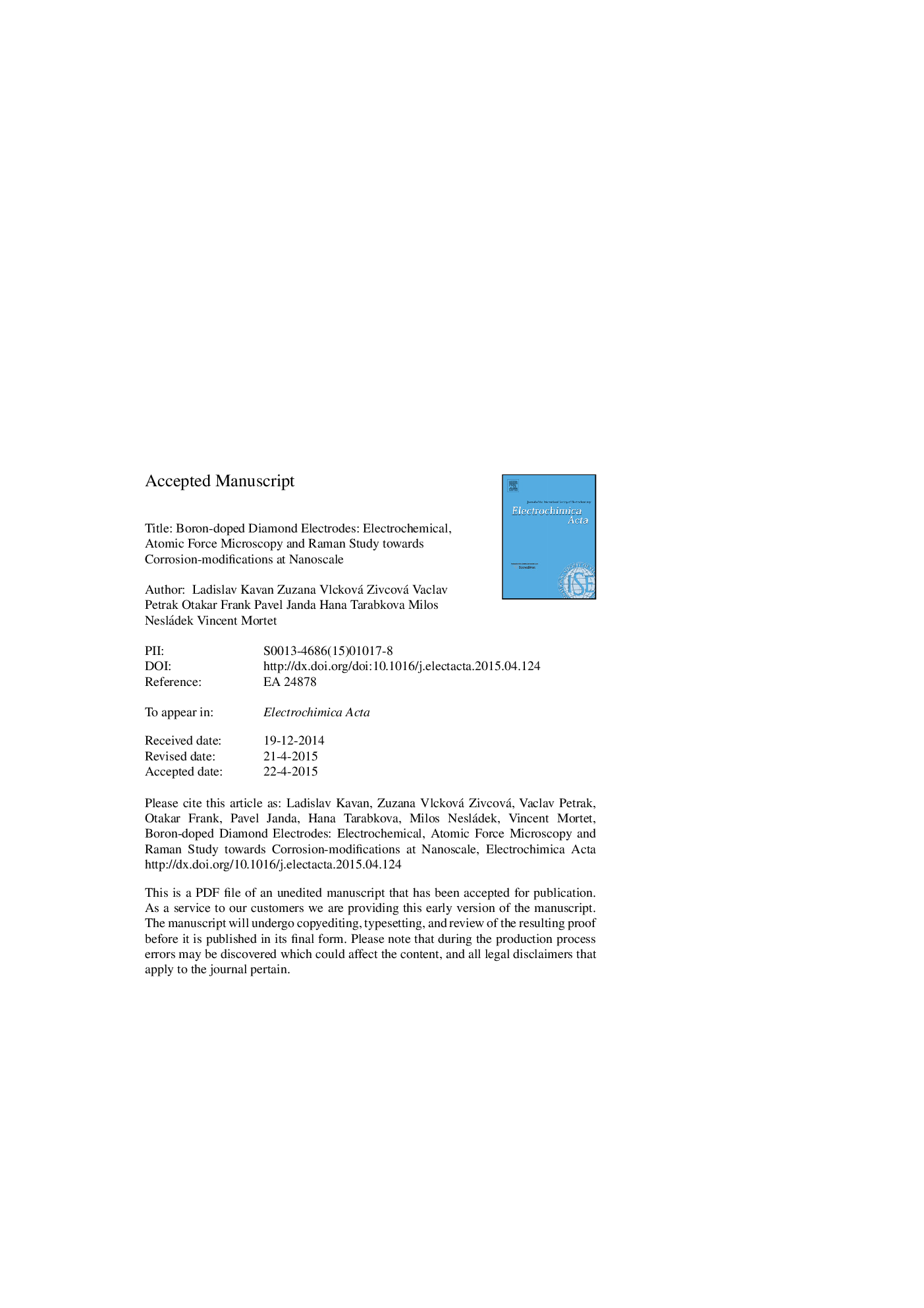| Article ID | Journal | Published Year | Pages | File Type |
|---|---|---|---|---|
| 6610761 | Electrochimica Acta | 2015 | 33 Pages |
Abstract
Comparative studies of boron-doped diamonds electrodes (polycrystalline, single-crystalline, H-/O-terminated, and with different sp3/sp2 ratios) indicate morphological modifications of diamond which are initiated by corrosion at nanoscale. In-situ electrochemical AFM imaging evidences that the textural changes start at non-diamond carbonaceous impurity sites treated at high positive potentials (>2.2Â V vs. Ag/AgCl). The primary perturbations subsequently develop into sub-micron-sized craters. Raman spectroscopy shows that the primary erosion site is graphite-like (sp2-carbon), which is preferentially removed by anodic oxidation. Other non-diamond impurity, viz. tetrahedral amorphous carbon (t-aC), is less sensitive to oxidative decomposition. The diamond-related Raman features, including the B-doping-assigned modes, are intact during reversible electrochemical charging/discharging, which is a salient difference from all usual sp2-carbons. The electrochemical oxidation partly transforms a hydrogen-terminated diamond surface to O-terminated one, but the electrocatalytic activity of plasmatically O-terminated diamond is not achieved for a model redox couple, Fe3+/2+. Electrochemical impedance spectra were fitted to six different equivalent circuits. The determination of acceptor concentrations is feasible even for highly-doped diamond electrodes.
Keywords
Related Topics
Physical Sciences and Engineering
Chemical Engineering
Chemical Engineering (General)
Authors
Ladislav Kavan, Zuzana Vlckova Zivcova, Vaclav Petrak, Otakar Frank, Pavel Janda, Hana Tarabkova, Milos Nesladek, Vincent Mortet,
